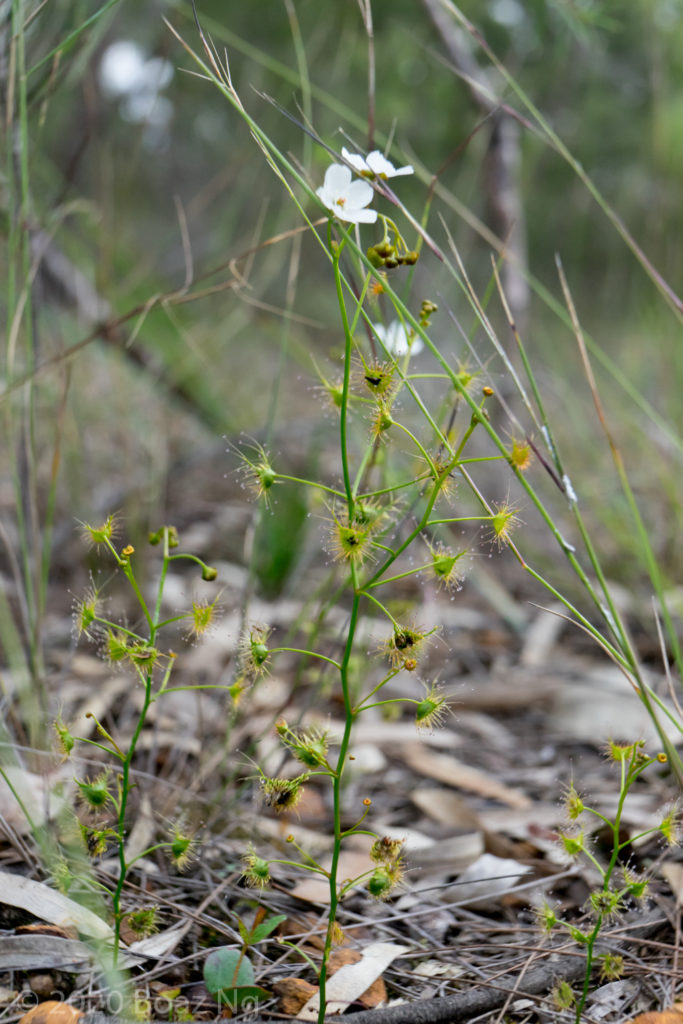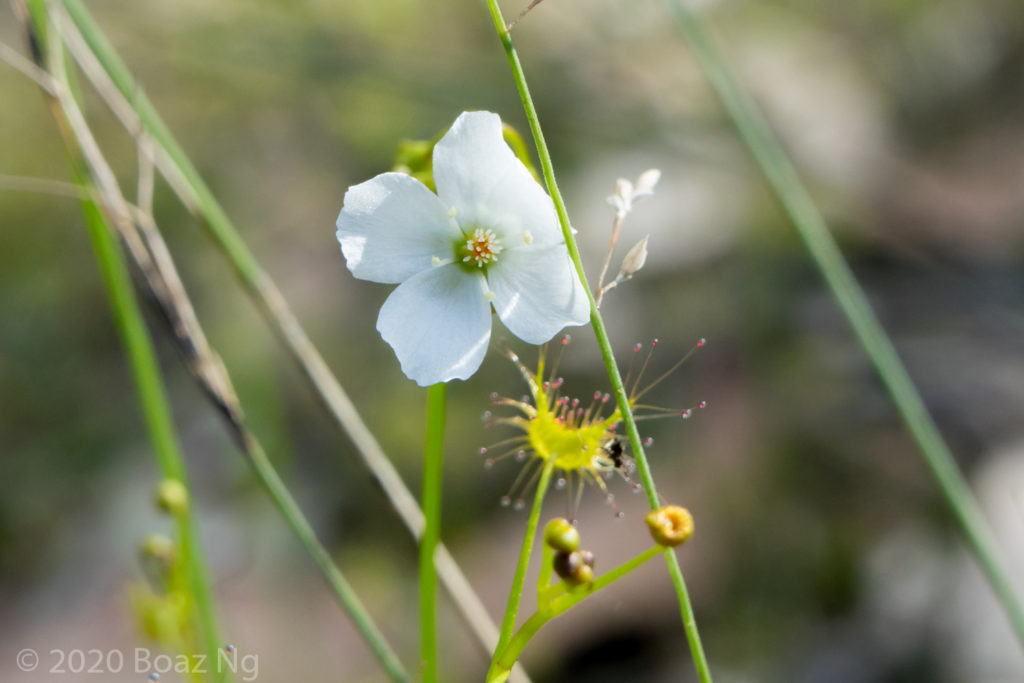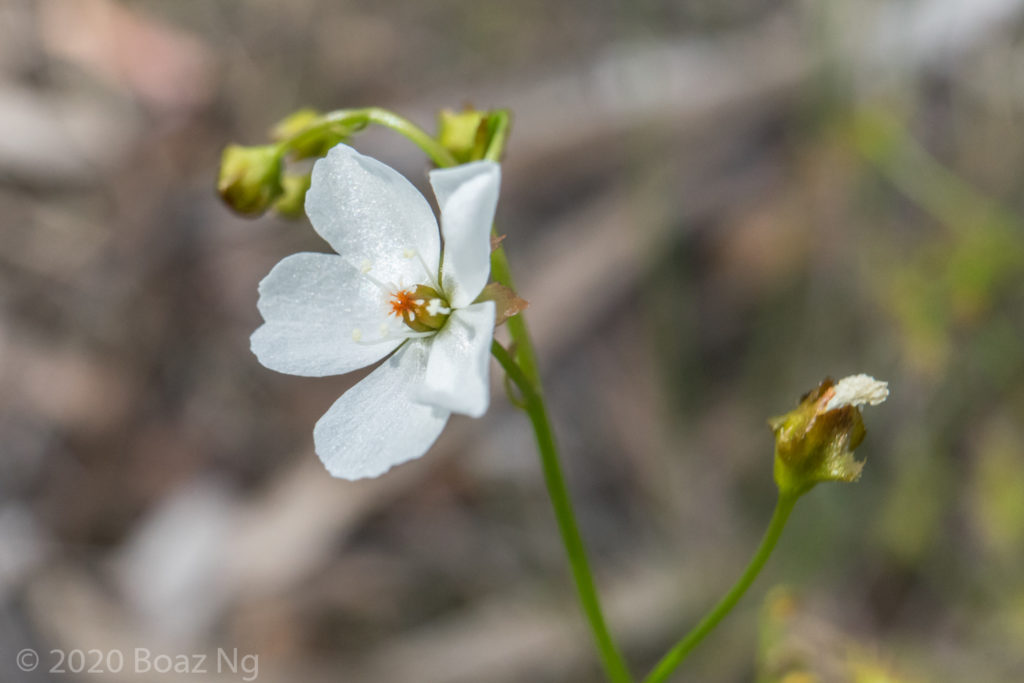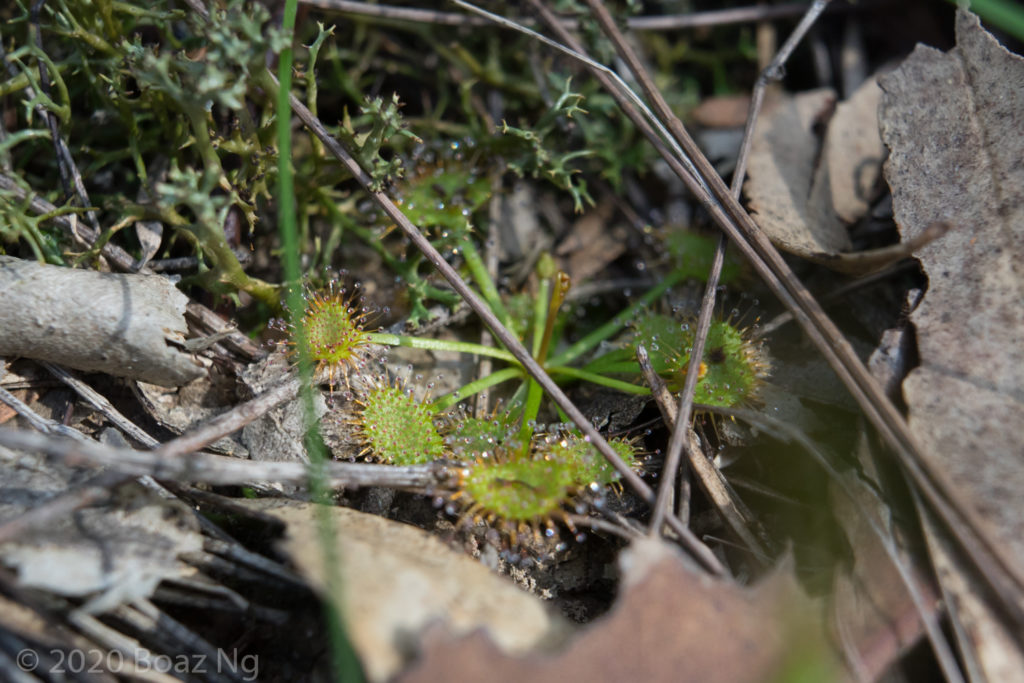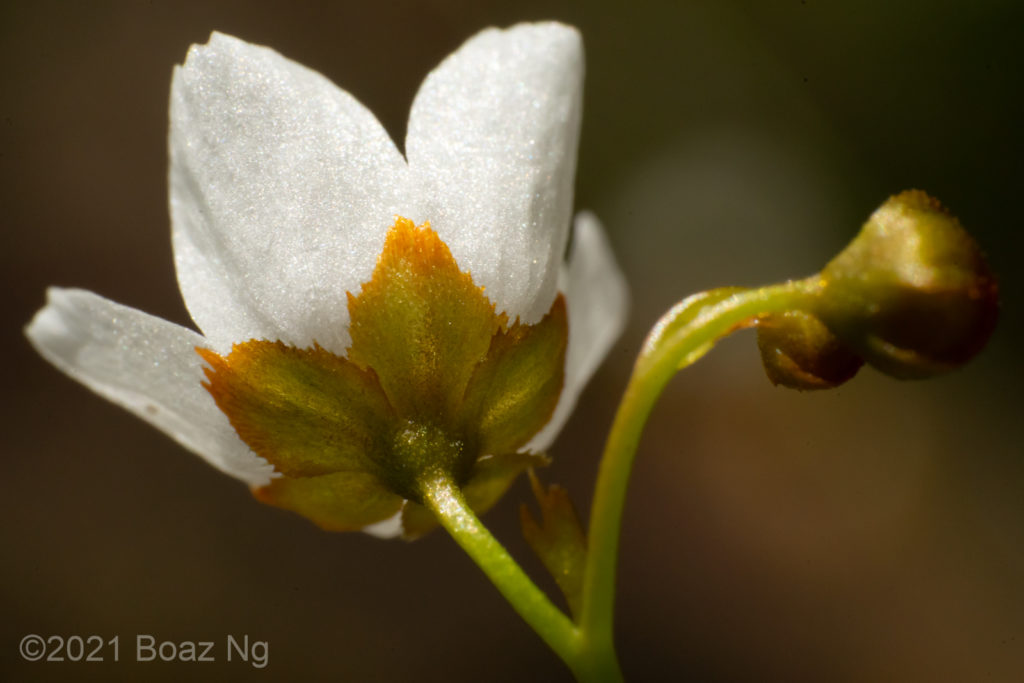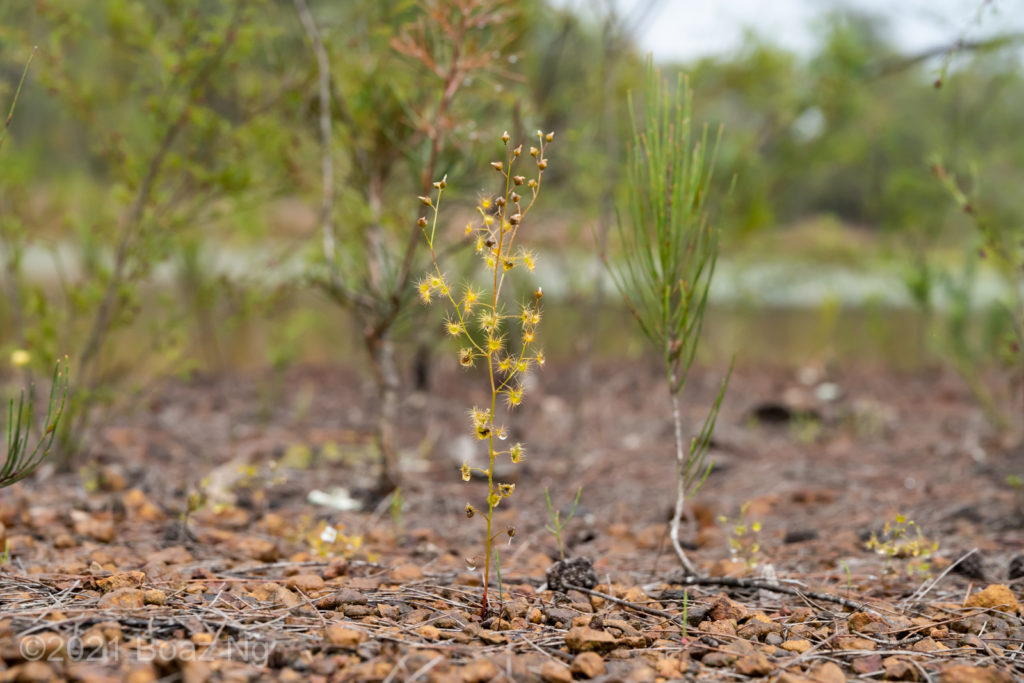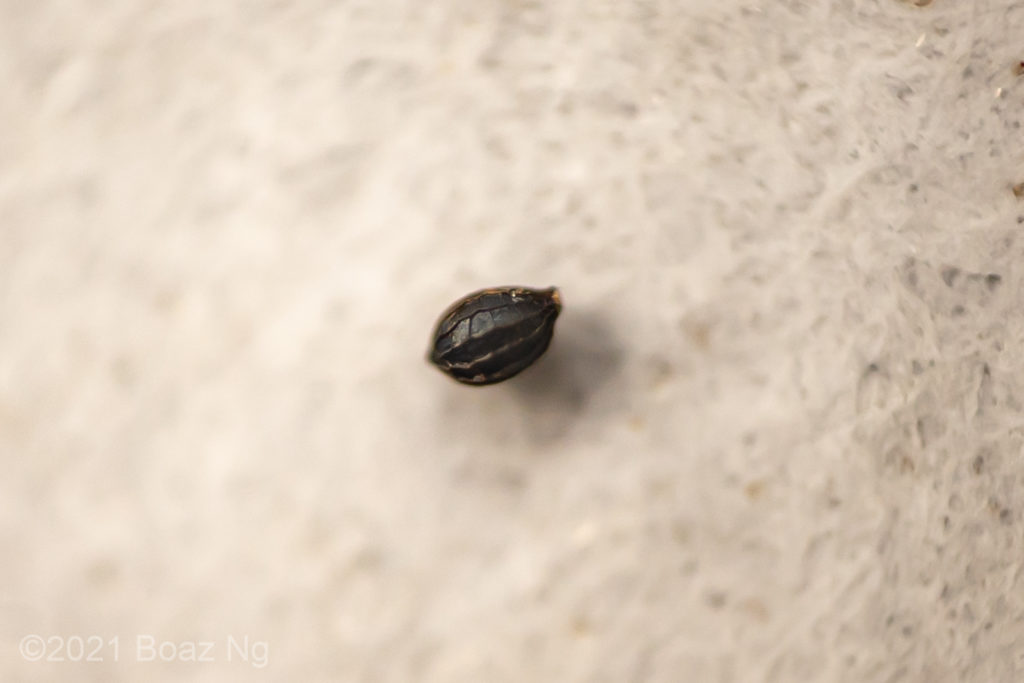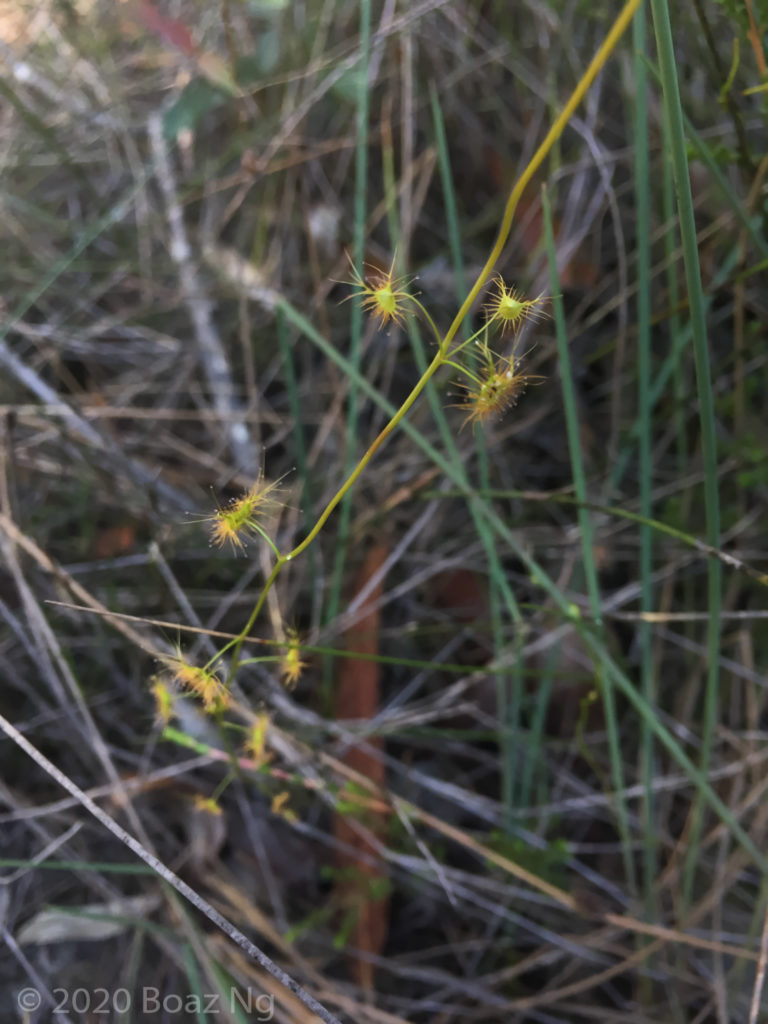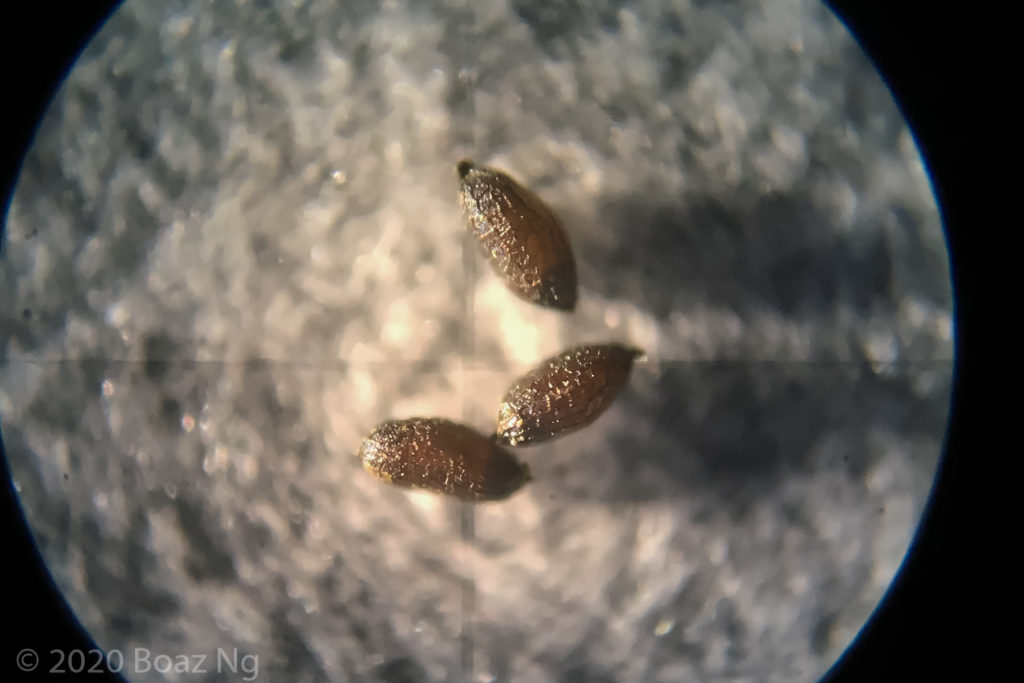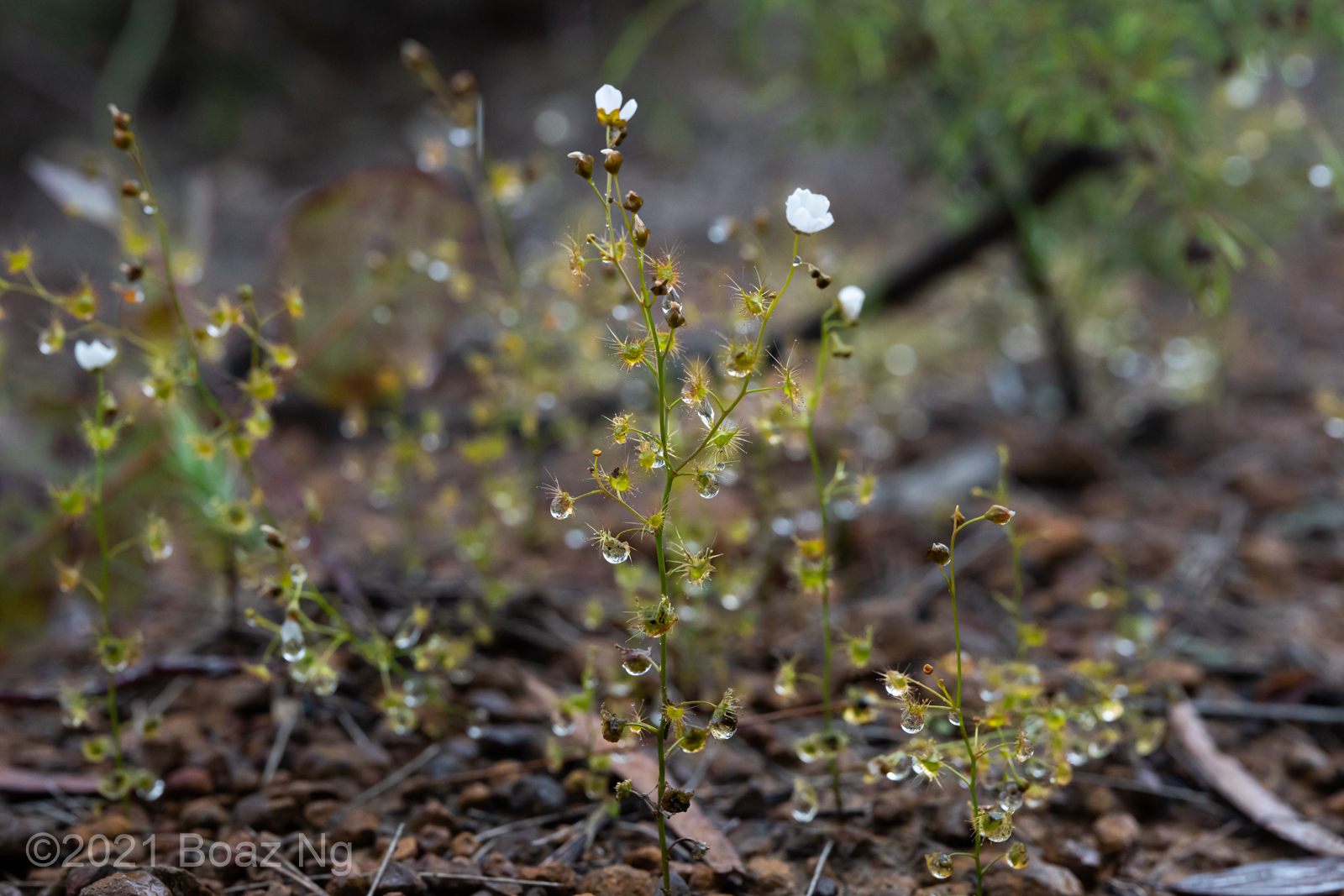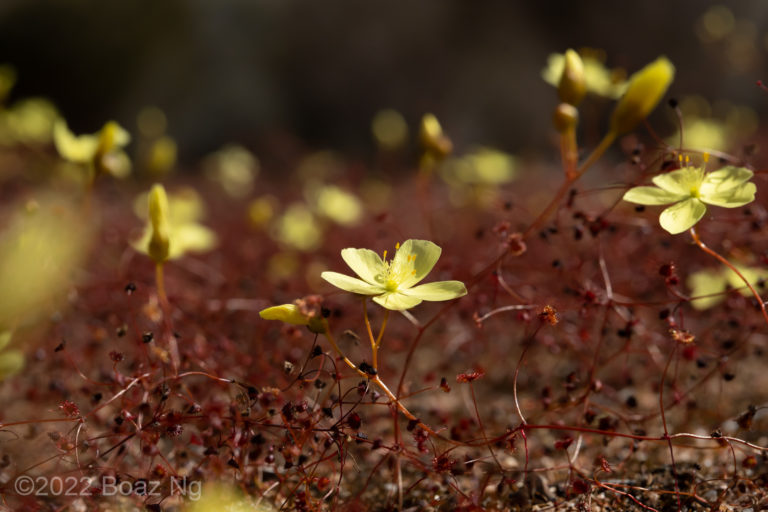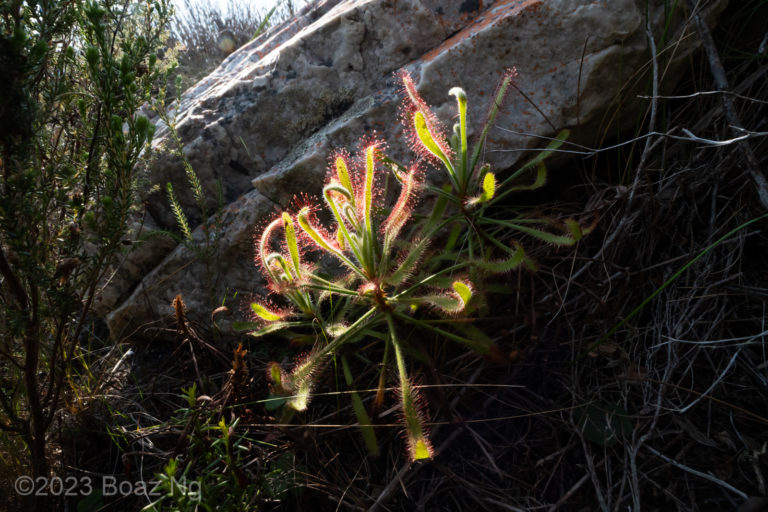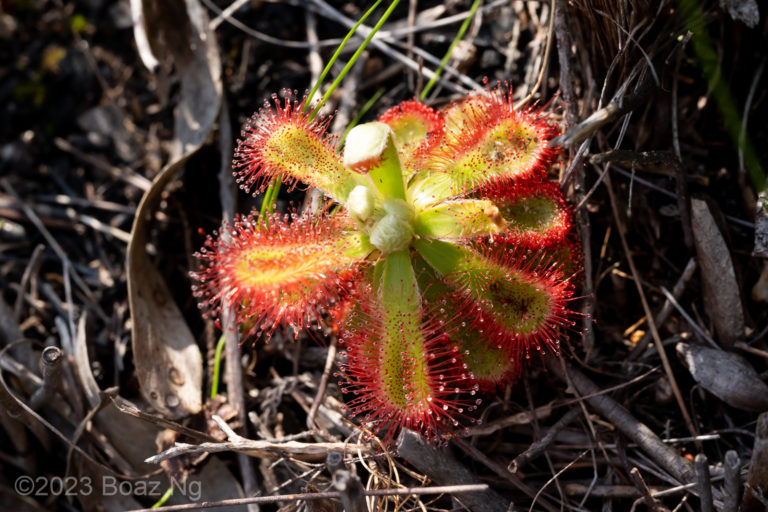Drosera lunata is an erect tuberous species in the Drosera peltata complex. It is widespread across monsoonal Asia and Australia. In Australia, it is commonly found in Queensland and northern NSW, although isolated populations occur down the coast to Sydney. I have mainly observed the plants in the Cumberland Plain of Western Sydney so I can only speak of their ecology there.
In Sydney, the plants are more associated with rain more so than season (as opposed to the other members of the complex which are strictly winter growing). The plants will even grow throughout summer provided that the rains persist. They inhabit clay-based open shrubland and the edges of woodland.
Drosera lunata forms a thin erect stem which often splits into a few smaller stems near the apex. The petioles are long and often emerge from the main stem at harsh almost 90 degree angles (as opposed to say D. auriculata, which typically has petioles that emerge with a upwards curved angle). The lamina are crescent shaped. Flowering sized plants tend not to form a basal rosette, however it is present in younger plants. The basal rosette is distinctive, with long thin petioles which are uniform in width, abruptly transitioning to an oval lamina. The style structure of the Cumberland Plain population is brown in colour.
Drosera lunata can be distinguished from other members of the peltata complex first by its glabrous sepals, a feature shared only with Drosera auriculata. These two species can be easily separated by the shape of their seed – Drosera lunata has rounded, oval seed whereas Drosera auriculata has very long cylindrical seed.
A similar taxon with tall stems and glabrous sepals with fimbriate margins occurs along the NSW central-north coasts. While these plants currently key out to D. lunata, further study of their identity is warranted.
